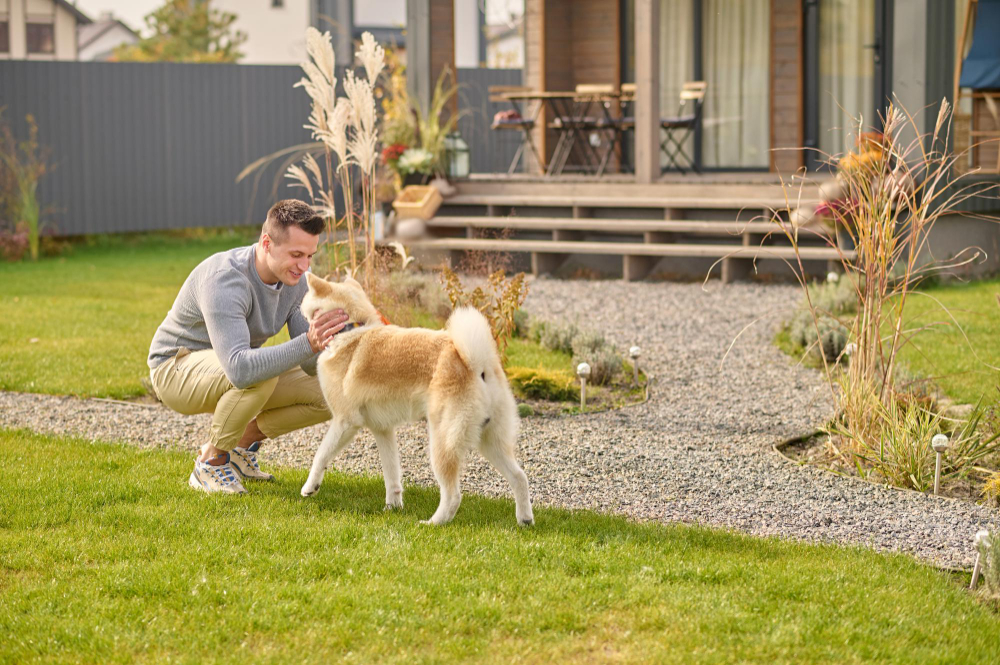Beyond the basics of food and hygiene, domestic animals like dogs require stimulation to engage their senses and instincts. A lack of such incentives can lead to a sedentary lifestyle, irritability, distress, and boredom in dogs, potentially resulting in behavioral issues, weight gain, aggression, and certain diseases.
The Impact of Environmental Enrichment
Environmental enrichment is a technique designed to make an animal’s living environment more engaging and enjoyable. It encourages animals to interact more, expend energy, and engage their senses and instincts. This significantly enhances their quality of life by providing opportunities for choice and the expression of natural behaviors.
Dogs are social creatures that thrive on interaction and engagement with their environment. In many cases, dogs spend a significant portion of their time alone due to their owners’ work commitments, leading to boredom or behavioral issues. If not provided with adequate stimuli, they may seek it in the human environment, damaging household items in the process. Environmental enrichment can help mitigate these issues, improving the quality of life and well-being of dogs and making them easier for owners to manage.
Types and Benefits of Environmental Enrichment
There are five types of environmental enrichment that can be tailored to your and your dog’s needs, each with its own unique benefits:
- Cognitive Enrichment: Aims to stimulate a dog’s intellectual development, including reasoning and memory. This can make dogs appear more intelligent and help them develop their instincts.
- Food Enrichment: Seeks to stimulate and preserve a dog’s hunting instinct. This can lead to increased energy expenditure and more interaction with the environment.
- Physical Enrichment: Encourages physical activities using the environment through toys, obstacles, and hiding places. This can help dogs exercise more and express their natural behaviors.
- Social Enrichment: Reduces aggressiveness and anxiety by stimulating social behavior with other animals, potentially of different species. This can boost a dog’s confidence and self-esteem.
- Sensory Enrichment: Stimulates the five senses – sight, hearing, touch, taste, and smell. This can promote well-being and positively influence a dog’s behavior.
Implementing Environmental Enrichment
Implementing environmental enrichment techniques is straightforward and doesn’t require a significant financial investment or complex ideas. Simple solutions often work best.
For busy owners, environmental enrichment toys for dogs, especially those that require problem-solving, can be a great solution. These interactive items, which release stimuli, can be found in pet shops, markets, and online. To use them, simply place a snack inside and let your dog enjoy it. You can also create homemade versions using items like a pet bottle filled with snacks. Always supervise your dog during these activities to prevent accidents.
Changing your dog’s usual feeding place can also provide enrichment. You can hide the feeder and create a scent trail to the new location using spices and herbs like turmeric, rosemary, and oregano.
Music, particularly classical music, can serve as environmental enrichment for dogs that spend a lot of time alone. Studies have shown that music can have a calming effect on dogs.
For food and sensory enrichment, consider providing frozen fruit on hot days. Just remember to use fruits that are safe for dogs, such as apples, bananas, and papayas, and ensure they are washed, peeled, and pitted.
While various household items can be used for environmental enrichment, it’s important to avoid items that could harm your dog’s health, such as plastic bags, toxic materials, certain flowers and plants, medications, and unsuitable toys.
Remember, environmental enrichment should not replace walks and routines you already have with your dog. Playing at home alone is not enough to keep your dog happy. It’s also crucial to note that enrichment should be done on alternate days, and you can use one type of environmental enrichment daily to maximize the technique’s potential.
Conclusion: The Power of Environmental Enrichment
In conclusion, environmental enrichment is a powerful tool for enhancing the quality of life for our canine companions. It provides a multifaceted approach to stimulating a dog’s senses and instincts, promoting physical activity, and encouraging social interaction. By implementing these techniques, owners can help their dogs lead happier, healthier, and more fulfilling lives.
However, it’s important to remember that environmental enrichment is not a substitute for regular walks, playtime, and bonding routines with your dog. It’s an additional layer of care that can help mitigate behavioral issues, reduce boredom, and stimulate your dog’s natural instincts and abilities.
As we’ve explored, the implementation of environmental enrichment doesn’t have to be complex or expensive. From interactive toys and changing feeding locations to the use of music and safe household items, there are numerous ways to enrich your dog’s environment. The key is to understand your dog’s needs, be creative, and always prioritize their safety.
Ultimately, environmental enrichment is about more than just keeping your dog entertained. It’s about understanding and catering to their natural behaviors and instincts, providing them with a stimulating environment that allows them to thrive. By doing so, we can help ensure our dogs are not just well-cared for, but truly happy.

